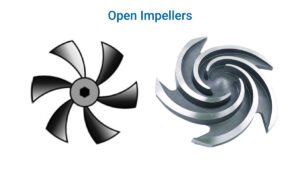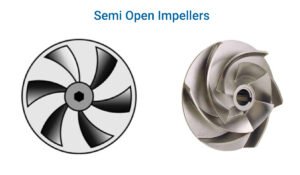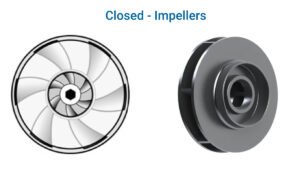Depending on the application, centrifugal pump impellers are chosen with care. Others are better for excellent efficiency, while some are better for sure handling. Read on which impeller will work best for your centrifugal pump application.
What is a Centrifugal Pump?
A centrifugal pump is a hydraulic device that uses the centrifugal force generated by the fluid to convert mechanical energy into hydraulic energy. This apparatus uses rotation to force a liquid’s velocity, which is subsequently transformed into a flow. Every centrifugal pump comprises mechanical parts that enable the pump to function.
Overview
The two types of impellers in centrifugal pumps that are often distinguished are open and closed. A primary component of the open impeller is connected to some vanes. It is done in preparation for attaching the shaft. This design is more susceptible to blade deterioration, though. There is a sidewall on the closed impeller.
A closed impeller can clog if stringy material or solids are forced through it, and cleaning them on either side (top and bottom) of the vanes becomes more challenging. An open impeller is less likely to get clogged; even if it does, it is easier to clean. Additionally, a closed impeller’s internal components are hidden, making it challenging to cast and check for faults; in contrast, an open impeller’s internal components are obvious. Thus, checking for damage is very simple.
Centrifugal Pump Impellers
The impeller in centrifugal pumps revolves while accelerating a liquid. It is fixed to the shaft of an electric motor. It is referred to as the revolving component of the centrifugal pump encased in a watertight casing.
Impeller Types
Depending on the fluid being handled, the design’s low or high pressure, whether the unit is self-priming, and if it is intended to handle entrained gas, different impeller designs are used in centrifugal pumps.
Care must be made during selection to strike the right balance between the process’s desired outcome and maintenance windows to get the best process efficiency.
Open Impellers-Explanations
An open impeller features vanes installed directly onto a shaft and connected to a central hub. Open impellers are weaker than closed or semi-closed valves because there is no wall enclosing the vanes. Open impellers typically operate more quickly and are relatively simple to maintain. Small pumps generally are not used with open impellers. Additionally, open impellers are useless for pumps handling suspended materials because they are the greatest at taking them.

Semi-Open Impellers-Explanations
Regarding efficiency and NPSHr, they fall between open and closed impellers, making them appropriate for medium-sized pumps handling a modest volume of soft solids. The back-wall shroud on semi-open impellers strengthens the vanes mechanically while leaving the other side open. The distance between the vanes and the pump casing must be minimal, with semi-open impellers to prevent recirculation and slippage.

Closed Impellers- Explanations
These enclose the vanes with rear and front walls, enhancing their strength. They are idle in applications involving liquids and fluids with suspended solids and are employed primarily in larger pumps. These are typically used whenever a clear liquid is applied. Due to how challenging they are to unclog when they become blocked, they are bad when it comes to solids.

Major differences between open and closed impellers in Centrifugal Pumps
- Due to their ability to handle flammable and explosive fluids, closed impellers are the most frequently employed in the industry.
- An open impeller’s efficiency may be maintained through clearance modification, whereas the closed impeller’s efficiency gradually decreases over time as the wear ring clearance increases.
- When the pump has a closed impeller, it has to be removed to verify the condition of the worn rings. There is no need to disassemble the pump when using an open impeller.
- If stringy material or solids are pumped with a closed impeller, the impeller might clog, and it becomes more challenging to clean them. An open impeller is less likely to get clogged; even if it does, it is easier to clean.
- An open impeller has all its internal components visible, whereas a closed impeller’s internal components are hidden, making it more difficult to cast and inspect for defects. Thus, checking for damage is very simple.
- Compared to an open impeller, the design of a closed impeller is more intricate and expensive since more wear rings are required.
- A closed impeller cannot be easily modified to enhance performance. In contrast, an open impeller’s vanes can be shortened to increase capacity.
- There are few options for speed in a closed impeller. However, you can choose an open impeller from an extensive range of special rates.
Microcare, founded in 1989, is renowned for using cutting-edge methods and technology to manufacturing pump spares parts in Ahmedabad. Because of our technical expertise and practical shop floor experience, we at Microcare can invent new ideas, which sets us apart from other manufacturers and makes us desired. We add value by using automation and special purpose machines (SPM) to reduce the chance of human error and manufacture flawless products following design and drawing specifications.


